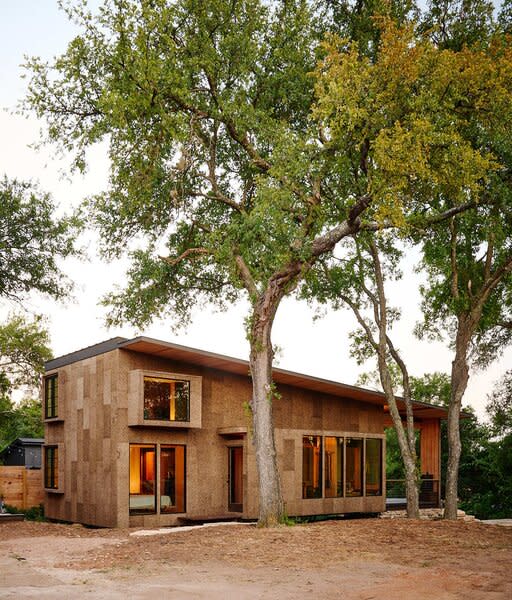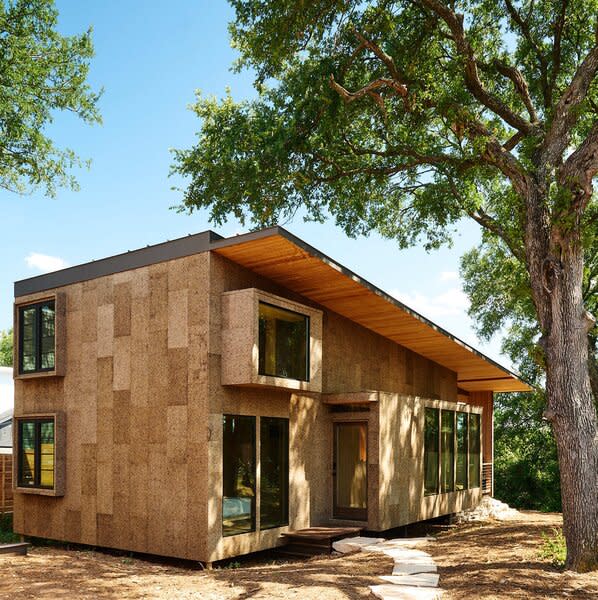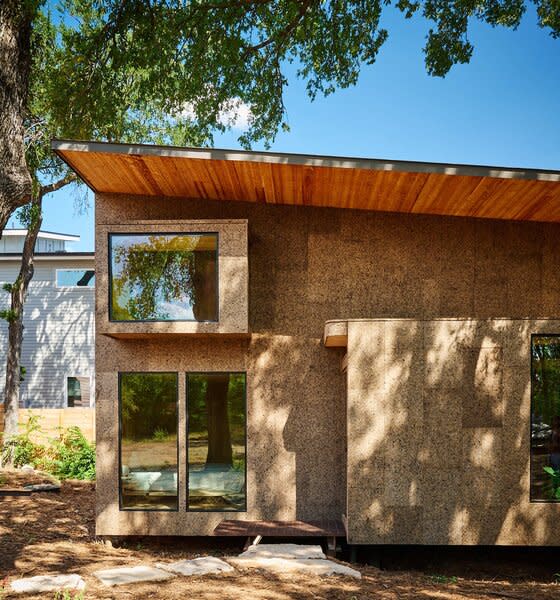Budget Breakdown: An Austin Architect Spins Michael Pollan’s Food Advice Into a Healthy Home
Tired of toxic materials, Greg Esparza started experimenting with the most natural ones he could find, including cork, hemp, and cross-laminated timber.

Greg Esparza takes one of his architectural cues from his days running an Austin, Texas, farmers’ market back in 2009, when he was also launching his design career. "It’s like the Michael Pollan rule: Eat food, not too much, mostly plants," Greg says. "If we are trying to nourish ourselves with ingredients our grandmother would recognize, why wouldn’t I want to build a house with materials she would recognize?"
A cofounder of design-build firm Moontower, he applied Polan’s advice to build an experimental home in Austin: a shed-roofed two-bed, two-bath made of cross-laminated timber and clad in a patchwork of mottled brown panels. (It was part of the city’s AIA Homes Tour this year.) The material is unmistakable. "When people come up to it, no matter who they are, they are like, ‘This is cork, right?’" Greg says.
The 1,000-square-foot residence is made mostly with plant-based products, aspiring to be one of the healthiest the city has seen. Greg’s initial focus in designing residences was human scale, but it has since expanded to include promoting the well-being of people and planet by addressing the short-comings of traditional construction—namely excessive waste and toxic, energy-hungry materials. "In 12 years of making buildings, I saw a lot go to the landfill. It becomes a drag when you see that over and over," says Greg.
See the full story on Dwell.com: Budget Breakdown: An Austin Architect Spins Michael Pollan’s Food Advice Into a Healthy Home
Related stories:




